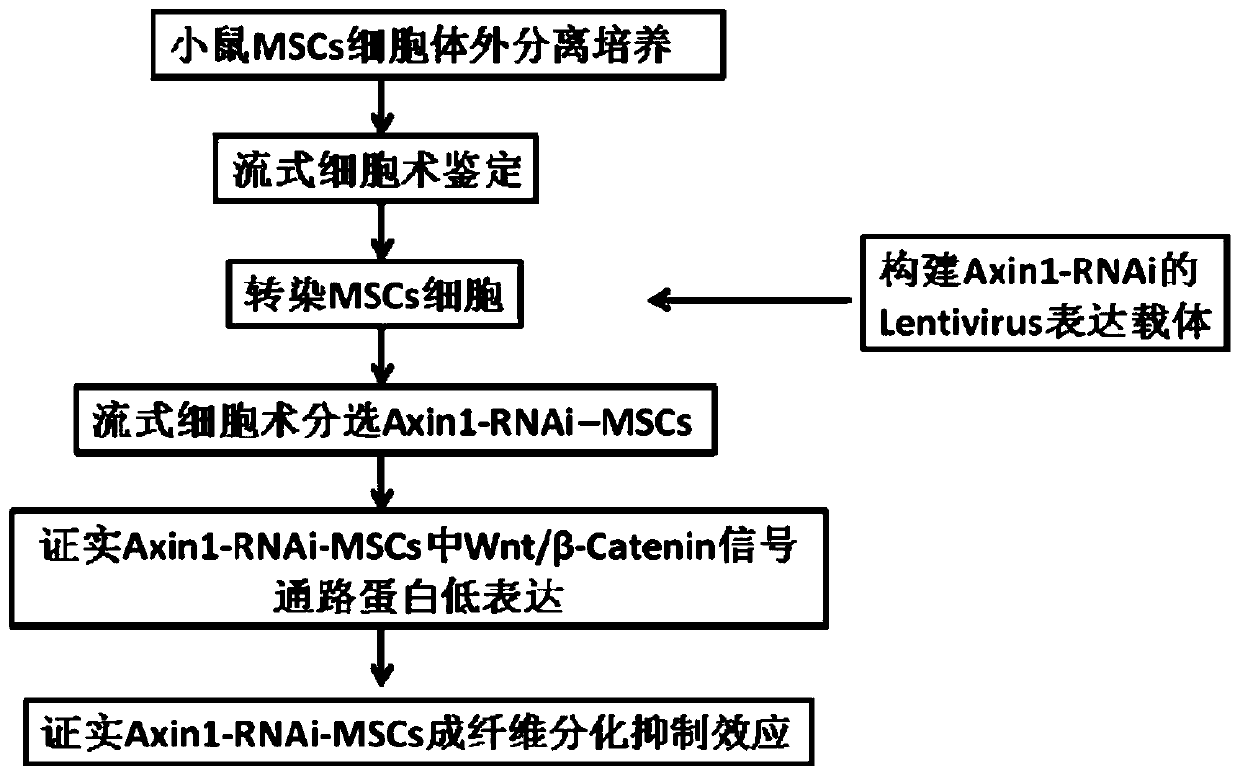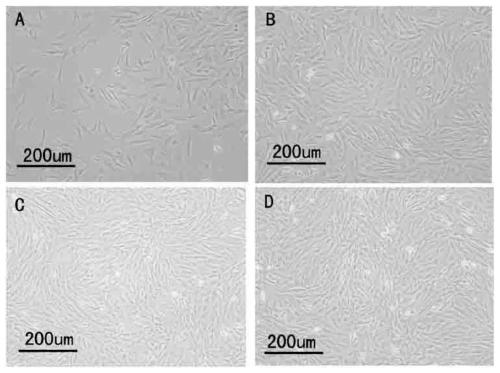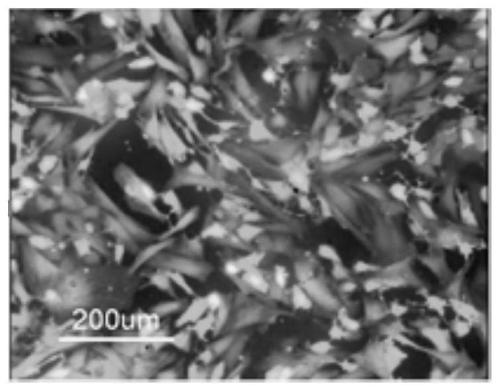A method of inhibiting fibroblast differentiation of MSCs, MSCs and DNA fragments
A technology of fibrogenesis and fragmentation, applied in the direction of DNA/RNA fragmentation, recombinant DNA technology, biochemical equipment and methods, etc., can solve problems such as limiting the application of MSCs, and achieve the effect of reducing the risk of differentiation into fibroblasts
- Summary
- Abstract
- Description
- Claims
- Application Information
AI Technical Summary
Problems solved by technology
Method used
Image
Examples
Embodiment 1
[0050] Primary culture of embodiment 1 mouse MSCs
[0051] Culture mouse bone marrow MSCs in the following manner:
[0052] (1) Choose about 30-40g C57BL / 6 female mouse, separate the femur and tibia of the mouse under sterile conditions, remove the muscle tissue and connective tissue, wash the bone marrow cavity with PBS, blow the bone marrow, and obtain the bone marrow cell suspension , and then filter the cells through a 100-mesh sieve to remove bone fragments and other impurities.
[0053] (2) Collect the cell suspension, centrifuge at 1500rpm / min for 5 minutes, discard the supernatant, resuspend the cells with a 1:4 mixture of PBS and ACK erythrocyte lysate, centrifuge at 1500rpm / min for 15 minutes, discard supernatant. Wash 3 times with PBS.
[0054] (3) Resuspend the cells with 10% FBS-containing DMEM basal medium (adding 1% L-glutamine, 1% penicillin and streptomycin) and add 1×10 6 Inoculate cells / ml in a 100mm cell culture dish at 37°C, 5% CO 2 In a cell incubato...
Embodiment 2
[0057] Example 2 Preparation of Axin1-RNAi lentiviral vector
[0058] Prepare the Axin1-RNAi lentiviral vector as follows:
[0059] (1) After multiple screenings, it was finally determined that two single-stranded DNA oligonucleotides were synthesized to inhibit the expression of the Axin1 gene, and their nucleotide sequences were as follows:
[0060] Sense strand (5'-3'): TCCCACTTTGAATGAGGATGAACTCGAGTTCATCCTCATTCAAAGTGGGTTTTTTTC (SEQ ID NO: 1);
[0061] Antisense strand (5'-3'): TCGAGAAAAAAA CCCACTTTGAATGAGGATGAACTCGAGTTCATCCTCATTCAAAGTGGGA (SEQ ID NO: 2).
[0062] (2) The single-stranded DNA oligonucleotides are paired to generate double strands by annealing, and the two ends of the formed double strands contain sticky ends with enzyme cutting sites, which are directly connected to the RNAi lentiviral vector pGC-LV after enzyme digestion .
[0063] (3) Transfer the ligation product into the prepared DH5α bacterial competent cells, and after the positive recombinants were ...
Embodiment 3A
[0065] Example 3 Titer detection of Axin1-RNAi lentiviral vector
[0066] Package and detect the titer of Axin1-RNAi lentiviral vector as follows:
[0067] (1) Preparation of high-quality viral vectors: Prepare recombinant viral plasmids encoding lentiviral particles and their two auxiliary packaging original pHelper plasmids, and perform high-purity and endotoxin-free extractions on the three plasmid vectors.
[0068] (2) Co-transfection of 293T cells: Co-transfection of 293T cells was carried out according to the instructions of Lipofectamine 2000 from Invitrogen Company. After 8 hours of transfection, the medium was replaced with complete medium.
[0069] (3) Virus harvesting and concentration: after culturing for 48 hours, the cell supernatant rich in lentivirus particles was collected and concentrated to obtain a high-titer lentivirus concentrate.
[0070] (4) Use TCID50 (Tissue Culture Infection Dose 50) method to measure virus titer: ① Inoculate 293T cells in logarithm...
PUM
 Login to View More
Login to View More Abstract
Description
Claims
Application Information
 Login to View More
Login to View More - R&D
- Intellectual Property
- Life Sciences
- Materials
- Tech Scout
- Unparalleled Data Quality
- Higher Quality Content
- 60% Fewer Hallucinations
Browse by: Latest US Patents, China's latest patents, Technical Efficacy Thesaurus, Application Domain, Technology Topic, Popular Technical Reports.
© 2025 PatSnap. All rights reserved.Legal|Privacy policy|Modern Slavery Act Transparency Statement|Sitemap|About US| Contact US: help@patsnap.com



